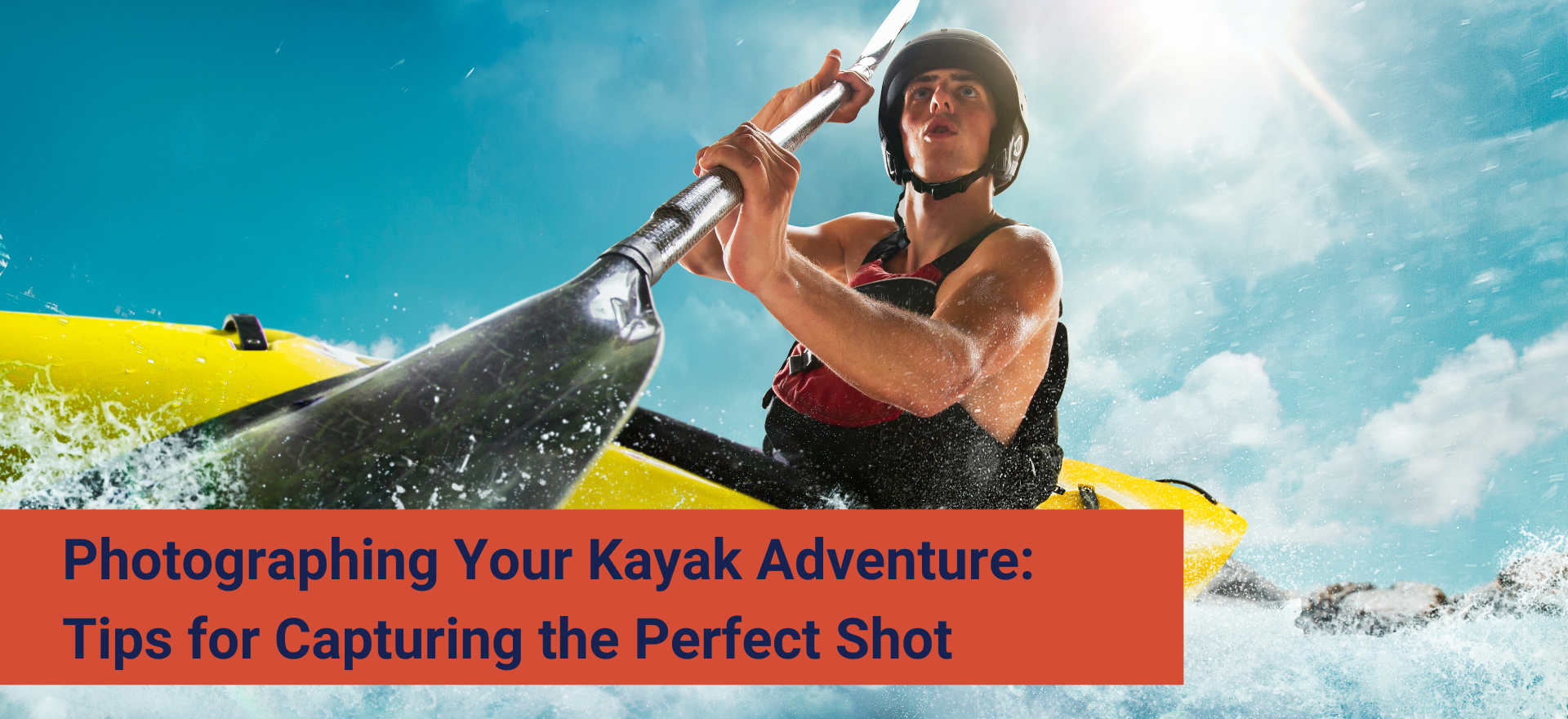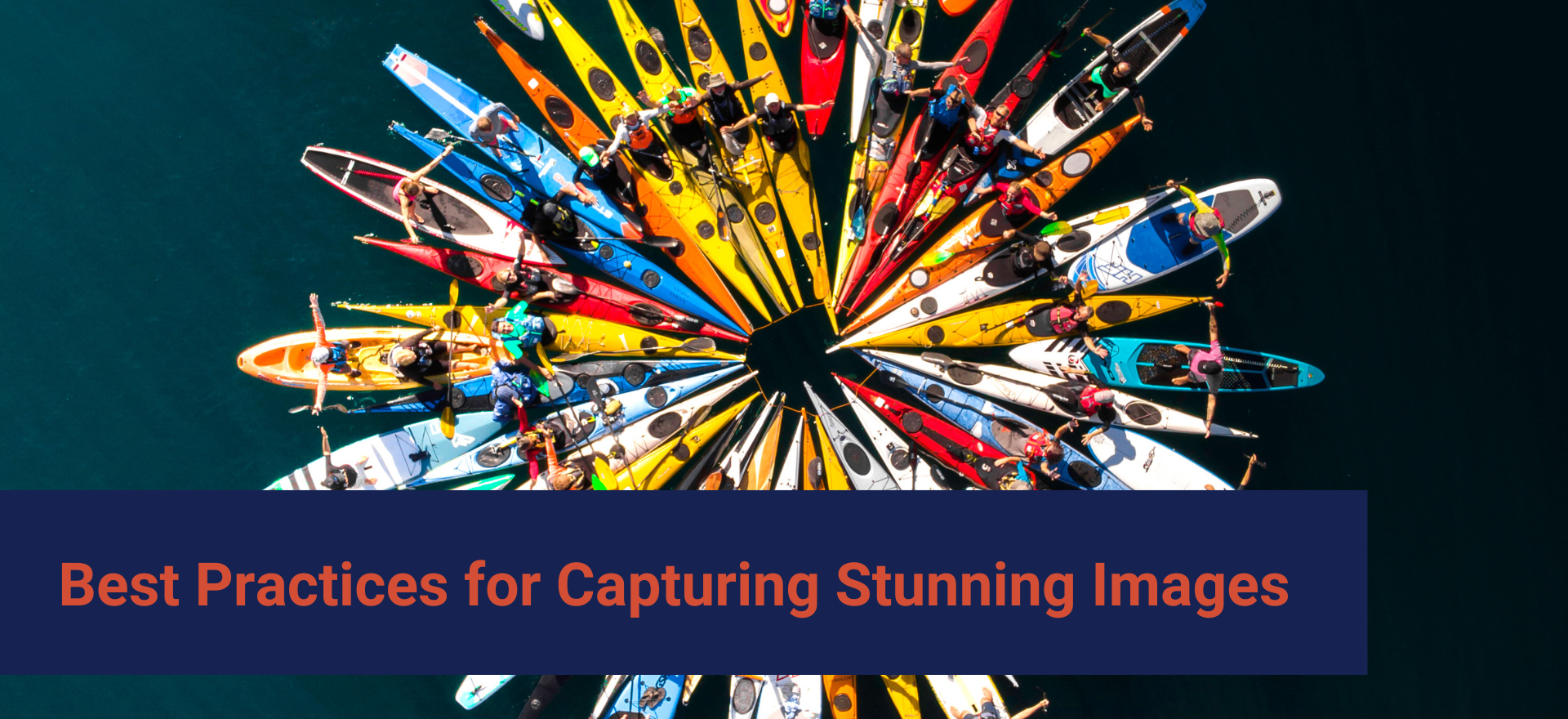Photographing Your Kayak Adventure: 5 Tips for Capturing the Perfect Shot

Kayak photography combines the thrill of kayaking with the art of photography, capturing moments of natural beauty from the unique vantage point of a kayak. Whether you’re paddling through the peaceful waters of the Colorado River near Las Vegas or exploring the farther backwaters, photographing from a kayak offers a modern point of view on nature. Learn more about our Las Vegas Kayak Tours for opportunities to capture these dazzling landscapes.
Best Practices for Capturing Stunning Images

When it comes to capturing that perfect shot, timing is everything. The golden hour, just after sunrise or before sunset, provides the best natural lighting conditions for photography. During these times, the soft light enhances the natural colors of the landscape and reduces the harshness often encountered during midday.
1.Choosing the Right Equipment
The first step to successful kayak photography is selecting the proper equipment. Stability is vital when choosing a kayak for photography. Fishing or pedal kayaks are preferred due to their improved stability and sufficient storage for photography gear. Learn more about the types of kayaks suitable for your adventure on our Guided Kayak Tours. In addition, a DSLR with a waterproof casing for safety is preferred, allowing for high-quality pictures even in challenging conditions. Opt for a lens between 70 and 400mm to capture wildlife on your adventure. The technique also plays an essential role. Using a polarizer can help decrease the glare from the water and upgrade the clarity and color of your shots. Understanding wildlife behavior is also essential to photograph animals, allowing you to capture them without disturbance.
2. Improve your Kayak Paddling
Improving your kayaking technique can also enhance your photography experience. Efficient paddling and the ability to maneuver quietly and smoothly will help you get into the best positions for photography without startling wildlife. Our Guides are experts in navigating these waters and helping you position yourself for the best photographic outcomes.
3. Master Camera Settings
Understanding your camera’s settings is essential for adapting to the various lighting conditions on the water. Test with shutter speeds to both freeze the action with a brief shutter or create a feel of movement with a slower one. Aperture settings also can play a significant role; a wider aperture allows more light and is suitable for lower light situations typically found during early morning or late afternoon paddles.
4. Composition and Perspective
Composition in kayak photography can be dynamic. Try to include elements that lead the eye through the image, such as the shoreline, a series of waves, or even your kayak’s bow. Shooting from a low angle stabilizes the shot and gives a sense of being close to the water, which can be dramatic and engaging.
5. Camera Safety: Straps and Attachments
When selecting the right strap or lanyard for your camera on a kayaking trip, choose materials like neoprene or nylon that are robust and quick-drying, ensuring the strap features a secure locking mechanism for a firm attachment to your camera. For personal security, attach the strap to your life jacket or harness, keeping your camera within reach for spontaneous shots without rummaging through your gear. Alternatively, you can secure it to your kayak using a stable attachment point such as deck loops or cleats, ensuring the strap or lanyard is long enough for easy camera operation but short enough to prevent the camera from hitting the water if dropped. Additionally, a strap with a quick-release mechanism is beneficial in dynamic settings, allowing for rapid detachment and reattachment of the camera. For added security, consider a floating camera strap, which not only prevents the camera from sinking but also is brightly colored for easy visibility in the water, enhancing the overall safety of your photography equipment.
Encourage Responsible Photography
As kayakers and photographers, we are responsible for preserving our waterways’ pristine conditions. Practicing “Leave No Trace” principles while on photographic excursions ensures that our natural habitats remain undisturbed and beautiful for future visitors and photographers alike.
Kayak Photography: Capture and Connect
Kayak photography is a thrilling way to explore and capture the beauty of nature from the water. With the proper equipment, knowledge, and strategies, you can take beautiful pictures that encapsulate the essence of your adventures. To learn more about how kayaking can relieve stress and beautify the overall experience, visit our Kayaking For stress relief page.
Kayak photography is an enriching activity that combines adventure, art, and environmental connection. You can capture pictures and the essence of the outdoors by choosing the proper equipment, mastering the specialized aspects of photography, and respecting nature. Ready to begin your adventure? Check out our variety of Guided Kayak Tours to discover the ideal setting for your next photographic journey.

